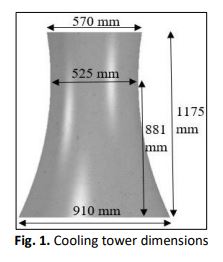Optimisation of H-Darrieus VAWT Solidity for Energy Extraction in Cooling Tower Exhaust Systems
DOI:
https://doi.org/10.37934/arfmts.91.2.5161Keywords:
Wind Turbines, Exhaust Energy Extraction, Turbine Solidity, Computational Fluid DynamicsAbstract
The technologies surrounding renewable energy have been receiving surmountable attention to producing clean energy and reducing the dependency on depleting fossil fuel sources. In this context, research investigations on vertical axis wind turbines (VAWT) in free stream flow condition has been extensively conducted to improve the energy extraction efficiency from the wind. VAWTs are particularly advantageous in locations not suitable for conventional horizontal axis wind turbines (HAWT). However, the applications of VAWTs are still limited due to their lower performances compared to their counterparts. Furthermore, the wind energy extraction problem is more prominent in urban areas with unpredictable and inadequate wind speed conditions. The present study focuses on an alternative way to harness wind energy from unnatural sources such as cooling tower exhaust systems with the reliable and consistent exhaust air. A three-dimensional numerical study has been conducted to investigate the performance of a 3-bladed H-Darrieus wind turbine (HDWT) using S-1046 airfoils of four different solidities under accelerated wind conditions of a cooling tower. The HDWT model is positioned at the cooling tower outlet, where it rotates using sliding mesh to measure the power output. Shear stress transport (SST) k- turbulence model solver was used to solve the implicit unsteady Reynolds-Averaged Navier-Stokes equations. It is observed that the higher solidity HDWT reached peak power coefficient at a lower tip speed ratio (TSR). In contrast, lower solidity HDWT achieved peak power coefficient at higher TSR. The higher solidity 0.375 and 0.450 produced a maximum power coefficient of 0.233 at TSR of 2.0.
Downloads






























